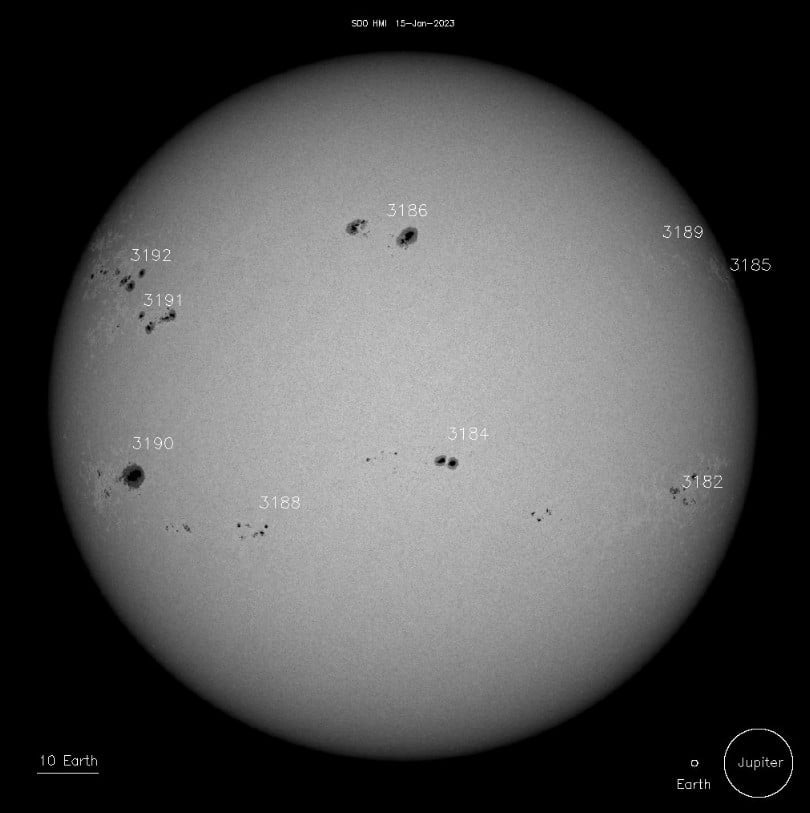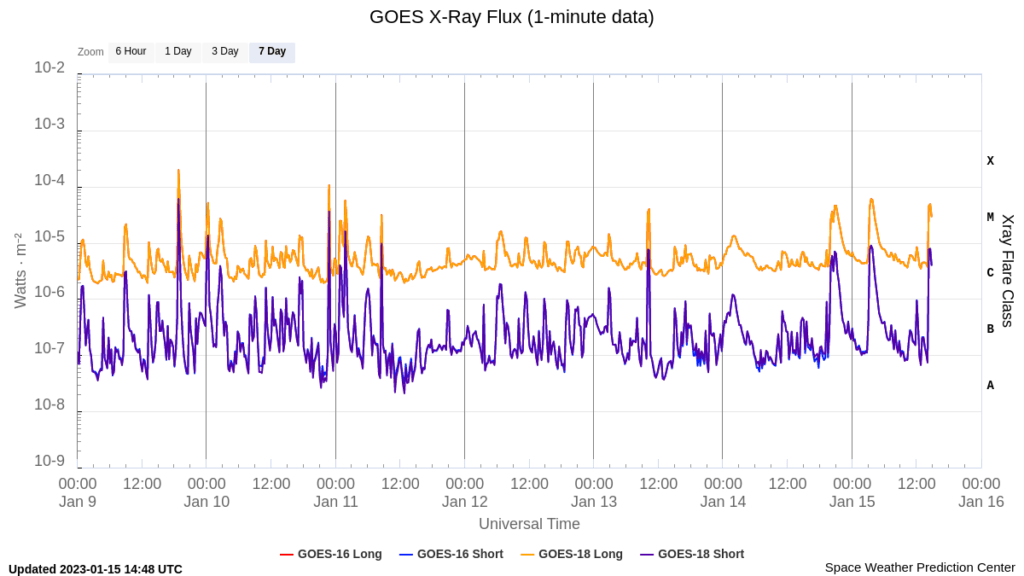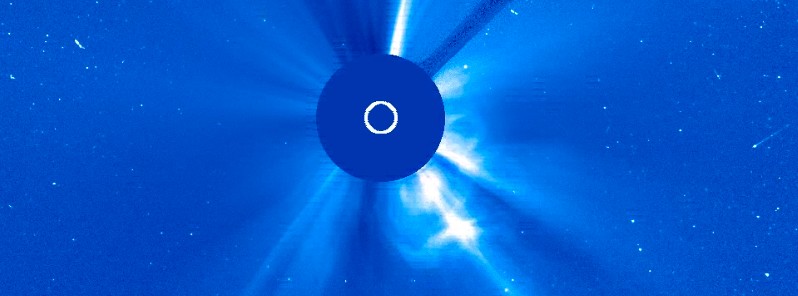Solar activity reached high levels in the past 24 hours, with the strongest event being an M6.0 flare from Region 3191. This event was accompanied by a Type II radio sweep and a Coronal Mass Ejection (CME) signature, however, analysis and modeling indicate that no Earth-directed component was produced. A CME was also observed off the southwest limb at 22:00 UTC on January 14, with analysis and modeling suggesting the possibility of a glancing blow on January 19.
Solar activity has been at high levels in the 24 hours to 12:30 UTC on January 15, 2023, with the strongest event during this period an M6.0 flare at 03:42 UTC today from Region 3191. This flare was associated with a Type II radio sweep (estimated velocity of 223 km/s) and a Coronal Mass Ejection (CME) signature from the southeast limb. Analysis and modeling of the event suggested no Earth-directed component was produced.1
In addition to this event, significant flare activity was also observed in Region 3182. This region produced an M3.5 at 20:21 UTC on January 14, followed by a long-duration M4.6 at 21:00 UTC.
This latest flare showed an EIT wave in SUVI-094 imagery and some ejecta off the WSW limb in GOES-16 SUVI 304 imagery.
A CME was also observed off the southwest limb, first observed after 22:00 UTC on January 14, and was analyzed and modeled with the results suggesting a glancing blow possible on January 19.
While minor growth was observed in Regions 3188, 3194, 3193, 3192 and 3191, the remaining numbered active regions were either stable or in gradual decay.
Three additional, relatively slow, Type II radio sweeps were reported at 12:46 UTC (estimated velocity 398 km/s) and 23:42 UTC (est. 465 km/s) on January 14, followed by another at 01:37 UTC on January 15 (est. 337 km/s). No Type IV radio sweeps were observed after these events. No additional potentially Earth-directed CMEs were identified in available coronagraph imagery.


In terms of the forecast, the SWPC predicts a chance for moderate solar activity over the next three days, with the likelihood of M-class (R1-R2; Minor-Moderate) flares and a slight chance of X-class (R3-Strong) events on January 15 – 17.
The greater than 2 MeV electron flux was at normal to moderate levels, and the greater than 10 MeV proton flux was at background levels in 24 hours to 12:30 UTC today. The forecast for these particles predicts that the greater than 2 MeV electron flux will continue at normal to moderate levels on January 15 – 17, and that the greater than 10 MeV proton flux will remain below S1 – Minor levels, but a chance for a threshold event remains a possibility for January 15 – 17.
Solar wind parameters as measured by the DSCOVR spacecraft likely reflected influence from a CME that left the sun on January 11. Total magnetic field strength peaked at 12 nT and the Bz component varied between +7/-10 nT. Solar wind speeds were between ~415 – 520 km/s while the phi angle was mostly negative.
The forecast for the solar wind predicts weak enhancements in solar wind parameters are likely to slowly diminish over January 15 as effects from the January 11 CME wane. A return to mostly ambient levels is expected over January 16 – 17.
The geomagnetic field reached G1 – Minor geomagnetic storm levels during the period, following a sustained southward orientation of Bz around 00:00 UTC on January 15.
Geomagnetic conditions are expected to range from quiet to G1 – Minor levels on January 15 under the continued transient influence. Isolated unsettled conditions on January 16 are expected to become mostly quiet over January 17 as solar wind conditions return to ambient levels.
1 Forecast Discussion – Issued: 2023 Jan 15 1230 UTC – Prepared by the U.S. Dept. of Commerce, NOAA, Space Weather Prediction Center




